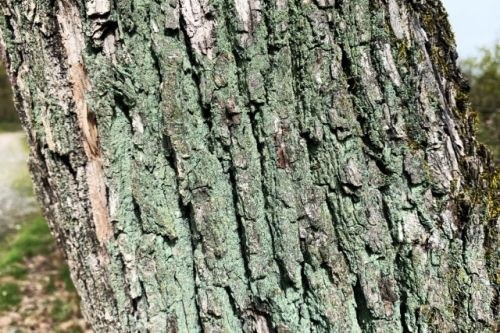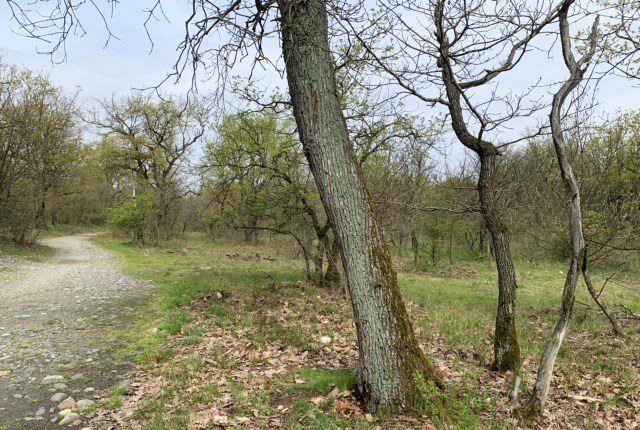The discovery was random and entirely unexpected, to the point of inspiring the name Leprocaulon inexpectatum. It is a new lichen species found in the Ticino Valley, between Lombardy and Piedmont, by Gabriele Gheza, researcher at the Department of Biological, Geological, and Environmental Sciences of the University of Bologna.
‘We chose to name this lichen “inexpectatum” to emphasise the unexpected discovery of a previously undescribed species in the Po Valley, one of the most human-altered and polluted areas in Europe’, says Gheza. “This is certainly an unlikely place to find new lichen species, as these organisms are known to be highly sensitive not only to pollution but also to human-induced environmental changes”.
As described in an article in the scientific journal The Lichenologist, Leprocaulon inexpectatum is a crustose lichen with a blue-green colour, similar to verdigris. It grows on the bark of trees such as oaks and chestnuts in broadleaf woods at low altitude.
The surprise at this discovery also underlines the fact that lichens remain understudied compared to other living groups. These fascinating organisms originate from the symbiosis between a macroscopic fungus, a photosynthetic partner, yeasts, and bacteria. They perform important ecosystem functions in many terrestrial habitats. To date, more than 2,800 species have been recorded in Italy alone, but as evidenced by the unexpected discovery in the Ticino Valley, we still do not know about them enough.
“The discovery was accidental, occurring during fieldwork to study a group of crustose lichens particularly challenging to classify”, says Gheza. “On that occasion I collected several samples of a species that, after careful laboratory analysis, did not match any previously known species”.
The researchers from the University of Bologna then carried out a series of genetic analyses in collaboration with lichenologist colleagues from the Universities of Graz (Austria) and Prague (Czechia). The results confirmed their initial suspicion that the samples belonged to a previously undescribed species.
Moreover, the photobiont inside the new lichen—a green alga classified under the genus Symbiochloris—turned out to be a new species.
This discovery reminds us that despite the widespread environmental degradation of the Po Valley, there are still “green islands” where biodiversity can persist and sustain itself’, adds Gheza. “The Ticino Valley—the place where Leprocaulon inexpectatum was first found—is a striking example. Protected by two regional parks, in Lombardy and in Piedmont, it serves as a crucial biodiversity reservoir and ecological corridor”.
After the initial unexpected discovery, the new lichen was found in other locations, namely in Val Camonica and on the Pistoia hills. This is further evidence of how much work needs to be done to achieve a satisfactory understanding of the biological diversity surrounding us.
“It is a mission of fundamental importance”, says Gheza. “Only by deepening our knowledge of biological diversity can we develop effective strategies to protect it”.
The study was published in the journal The Lichenologist with the title “The epiphytic leprose Leprocaulon inexpectatum sp. nov. (Ascomycota, Leprocaulaceae) from Italy and its photosynthetic partner Symbiochloris”. Gabriele Gheza and Juri Nascimbene of the Research Group in Biodiversity and Macroecology (BIOME) at the Department of Biological, Geological, and Environmental Sciences participated for the University of Bologna.




